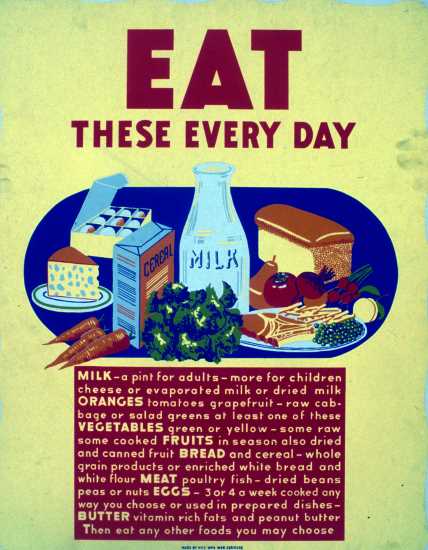Eating more fat-free or low-fat forms of dairy would benefit most Americans, according to the new Dietary Guidelines for Americans, released today by the U.S. Departments of Health and Human Services and Agriculture.
Those dairy forms are milk (including lactose-free milk), yogurt, and cheese or from fortified soy beverages (soymilk). According to the report, “some sweetened milk and yogurt products may be included in a healthy eating pattern as long as the total amount of added sugars consumed does not exceed the limit for added sugars, and the eating pattern does not exceed calorie limits.”
Daily dairy consumption by children, teens and adults is insufficient. Children age 3 and younger do meet dairy recommendations. Also found lacking in Americans’ diets are calcium, potassium, vitamin D and fiber, the so-called “nutrients of concern.” These same nutrients were cited five years ago, suggesting that Americans aren’t getting the message or they are not acting on that message.
What’s new about this edition is that the Guidelines focus on eating patterns and the nutrient characteristics of food. Previous editions focused primarily on individual dietary components such as food groups and nutrients.
What the Dietary Guidelines say
The Guidelines have been boiled down to these five points:
1. Follow a healthy eating pattern across the lifespan. All food and beverage choices matter. Choose a healthy eating pattern at an appropriate calorie level to help achieve and maintain a healthy body weight, support nutrient adequacy, and reduce the risk of chronic disease.
2. Focus on variety, nutrient density, and amount. To meet nutrient needs within calorie limits, choose a variety of nutrient-dense foods across and within all food groups in recommended amounts.
3. Limit calories from added sugars and saturated fats and reduce sodium intake. Consume an eating pattern low in added sugars, saturated fats, and sodium. Cut back on foods and beverages higher in these components to amounts that fit within healthy eating patterns.
4. Shift to healthier food and beverage choices. Choose nutrient-dense foods and beverages across and within all food groups in place of less healthy choices. Consider cultural and personal preferences to make these shifts easier to accomplish and maintain.
5. Support healthy eating patterns for all. Everyone has a role in helping to create and support healthy eating patterns in multiple settings nationwide, from home to school to work to communities.
Greg Miller told Dairy Foods that the Guidelines are good for dairy and not unlike the previous edition, for the most part. Miller is president of the National Dairy Council and a Dairy Foods contributing columnist. (Follow him on Twitter at @drdairy50.) The government recommends drinking more milk, and Miller said that consumers have a wider variety of innovative products to choose from, including high-protein milks, milk-juice combinations and new flavored milks.
The kids are alright (but adults need to step up)
According to the Guidelines: “Average dairy intake for most young children ages 1 to 3 years meets recommended amounts, but all other age groups have average intakes that are below recommendations. An age-related decline in dairy intake begins in childhood, and intakes persist at low levels for adults of all ages.”
According to the Guidelines, Americans’ dairy consumption comes from fluid milk (51%) and cheese (45%). Yogurt (2.6%) and fortified soy beverages (1.5%) make up the rest of dairy intake. The government considers soymilk to be a dairy product.
About three-fourths of all milk is consumed as a beverage or on cereal, but cheese is most commonly consumed as part of mixed dishes, such as burgers, sandwiches, tacos, pizza, and pasta dishes.
The Guidelines state that most individuals in the United States would benefit by increasing dairy intake in fat-free or low-fat forms. Dairy industry research suggests that milkfat provides some health benefits. Miller said the dairy industry has “neutralized” the negative image of milkfat, and that additional research is being conducted.
Pros: milk, yogurt; Cons: cheese
The Guidelines favor milk and yogurt over cheese, because cheese contains more sodium and saturated fats, and less potassium, vitamin A, and vitamin D than milk or yogurt.
A marketing playbook for dairy brands
Dairy marketers should pay attention to the Guidelines, which state: “Strategies to increase dairy intake include drinking fat-free or low-fat milk (or a fortified soy beverage) with meals, choosing yogurt as a snack, or using yogurt as an ingredient in prepared dishes such as salad dressings or spreads. Strategies for choosing dairy products in nutrient-dense forms include choosing lower fat versions of milk, yogurt, and cheese in place of whole milk products and regular cheese.”



